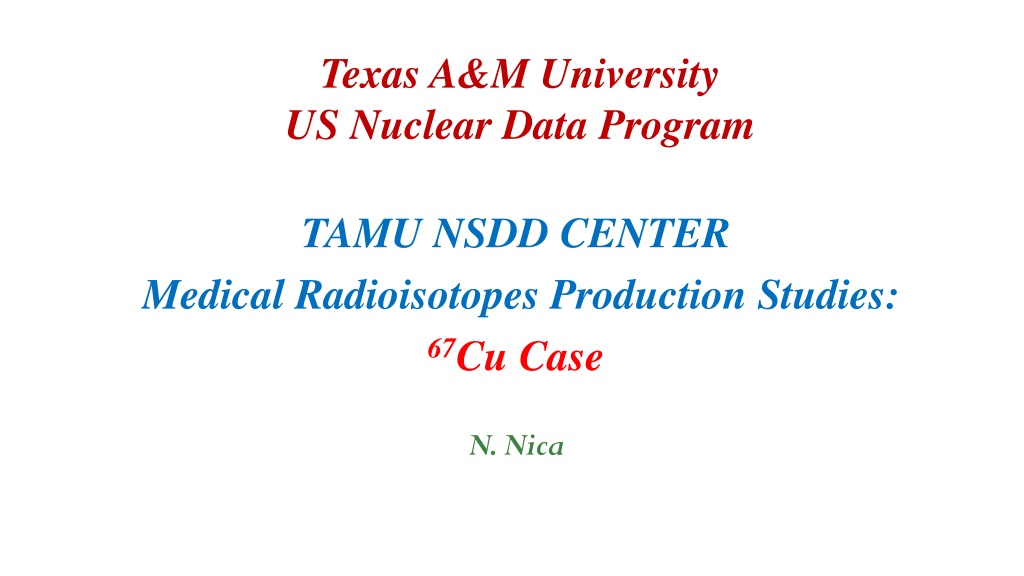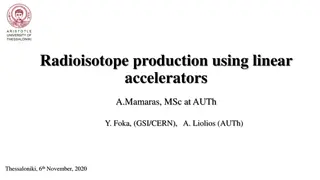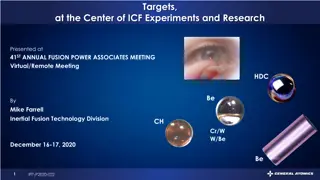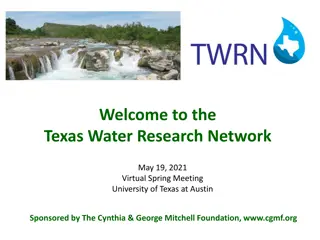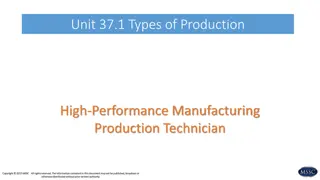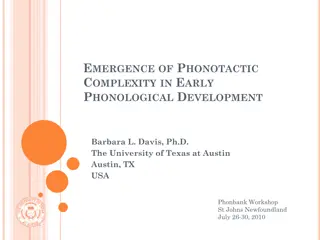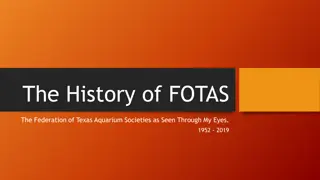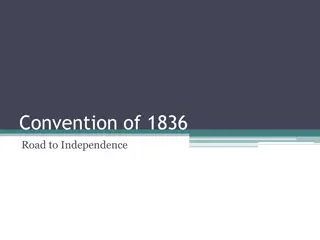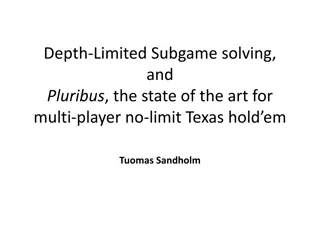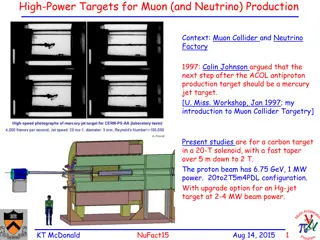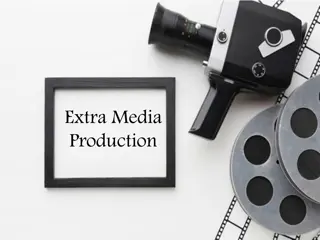Advances in Medical Radioisotope Production: Focus on 67Cu at Texas A&M University
Texas A&M University's Nuclear Data Program is at the forefront of research on medical radioisotopes, particularly highlighting the production and potential applications of 67Cu. This isotope offers promising benefits for diagnostic imaging and radioimmunotherapy due to its low-range, highly ionizing radiation properties. The evaluation center emphasizes the importance of improving availability and production techniques for 67Cu, with a focus on utilizing innovative methods such as inverse-kinematics nuclear reactions for efficient isotope harvesting. Through a combination of particle accelerators and photonuclear reactions, the program aims to advance medical isotope production capabilities for enhanced healthcare applications.
Download Presentation

Please find below an Image/Link to download the presentation.
The content on the website is provided AS IS for your information and personal use only. It may not be sold, licensed, or shared on other websites without obtaining consent from the author. Download presentation by click this link. If you encounter any issues during the download, it is possible that the publisher has removed the file from their server.
E N D
Presentation Transcript
Texas A&M University US Nuclear Data Program TAMU NSDD CENTER Medical Radioisotopes Production Studies: 67Cu Case N. Nica
Texas Texas A&M A&M Evaluation Center Evaluation Center Rationale Rationale for Medical Isotopes Production: The case of 67Cu Medical radionuclides: central in nuclear medicine in the fields of diagnostic imaging and radioimmunotherapy (RIT): Low-range highly ionizing radiation: , particles, Auger or conversion electrons New emitters of interest: 47Sc (T1/2=3.4 d), 67Cu (T1/2=2.6 d), 105Rh (T1/2=1.5 d), 161Tb (T1/2=6.9 d), 186Re (T1/2=3.7 d) Trace element copper takes part in basic biochemical processes Can be linked to biologically important molecules as antibodies, proteins, etc. Theranostic pairs: 67Cu can work in conjunction with same type of radiopharmaceuticals as 64Cu (T1/2=12.7 h) or 61Cu (T1/2=3.3 h) decay (Emax=577 keV); radiation of 185 keV (48.7%), 93 keV (16%) and 91 keV (7%). Single-photon emission computed tomography (SPECT) : imaging the radiotracer distribution (with existing technology for the 140 keV rays of 99mTc) mm) Main factor limiting wider preclinical and clinical use: limited availability 67Cu case: 67Cu offers the possibility of SPECT imaging and treatment of smaller size tumors (up to 4
Texas Texas A&M A&M Evaluation Center Evaluation Center The case of 67Cu: Production matters Last about 50 years: nuclear reactors New methods based on: particle accelerators Accelerator-produced neutrons Photonuclear reactions using bremsstrahlung photons from high-intensity electron linacs New: isotope harvesting in projectile fragmentation (e.g. stopped in aqueous solutions) All: 67Cu produced inside expensive target materials which should be processed for separating 67Cu and recycling the target materials Innovative approach & advantages: Inverse-kinematics nuclear reactions Reaction products are strongly focused along the beam direction and can relatively easily be collected for immediate use. Use low energy beam tuned to maximize 67Cu but reduce impurities. Collect almost pure 67Cu in a catcher and use it with radiochemical minimum processing 68Zn(p,2p)67Cu, Ep=70 100 MeV; 70Zn(p, )67Cu; 70Zn(d, n)67Cu; natZn(d,x)67Cu, 64Ni( ,p)67Cu
Texas Texas A&M A&M Evaluation Center Evaluation Center Expanded Involvement in Applied Measurements for Medical Isotopes Production by Inverse Kinematics Theme: Research for Medical Isotopes Production by Inverse Kinematics Theme: Research for Medical Isotopes Production by Inverse Kinematics Innovative method for the production of important medical radioisotopes based on the nuclear reaction in inverse kinematics, by: Directing a heavy ion beam of appropriate energy on a light target (e.g., H, d, He) and Collecting the isotope of interest on an appropriate catcher after the target.
Texas Texas A&M A&M Evaluation Center Evaluation Center The case of 67Cu: Cryogenic gas target cell Important asset: Cryogenic gas target cell
Texas Texas A&M A&M Evaluation Center Evaluation Center The case of 67Cu: MARS Spectrometer Important asset: MARS spectrometer to be used for beam and reaction products diagnostics
Texas Texas A&M A&M Evaluation Center Evaluation Center The case of 67Cu: Irradiation Beam: 6.5 h with a beam current of 0.19(5) pnA Average equilibrium charge (LISE++): 26+ Two Faraday cups: before the gas cell and after same ladder as catcher Suppression test run with 21Ne beam, 28 MeV/nucleon, 40% reduction
A&M Evaluation Center Evaluation Center The case of 67Cu: Off- -line line - -spectra measurement spectra measurement Texas Texas A&M Off Cooling time: 36.5 h Catcher foil placed at 17.2(10) mm in front of HPGe detector, 2-3% dead time 152Eu energy calibration Absolute efficiency calibration done with GEANT4 and EGSnrc codes: 10% unc Spectra acquired for 67.3 h, background-subtracted
Texas Texas A&M A&M Evaluation Center Evaluation Center The case of 67Cu: Activities Activities
Texas Texas A&M A&M Evaluation Center Evaluation Center The case of 67Cu: Use of neutrons Use of neutrons Block of natZn 25.4 25.4 20 mm3activated with neutrons; Measured for 40 h starting 7.5 days after the 6.5 h beam irradiation TALYS simulation: 1.6 neutron/reaction act on average mainly from 67Zn(n,p)67Cu reaction Exerimental result: 5.3(8) Bq of 67Cu (end of irradiation) Still to correct for neutron ang. distribution (2% n flux collected), attenuation in the source (about 50%) and 67Zn natural abundance (4.04%)
Texas Texas A&M A&M Evaluation Center Evaluation Center The case of 67Cu: Conclusions Conclusions Advantages of inverse kinematics and setup Advantages of inverse kinematics and setup Enhanced isotope collection at forward angles and easier harvesting and use of 67Cu. Advantage of minimizing expensive 70Zn isotope (0.6% natural abundance) at mg/day rate as projectile instead of g/day as source (plus radiochemistry & recycling). Minimize the production of radioimpurities arising from the main reaction by choosing the appropriate reaction channel and the subsequent cooling time of the products. Entrance Havar Window (Co, Cr, Ni, W, etc.) : Peripheral or semiperipheral (deep-inelastic) collisions have rather wide angular distributions and are expected to mostly miss the catcher foil Products of complete or nearly complete fusion are forward-focused but are heavier and slower than the beam and may mostly stop in the gas. Exit Havar Window & Catcher: Adjust gas cell parameters (pressure, temperature, length) in order that primary beam reaches this Window & Catcher near or below the Coulomb barrier of the relevant reactions (e.g., 3.5-4.0 MeV/nucleon). For Catcher one can use water or other material (salt, sugar, etc.) in order to collect the radioisotopes in a convenient chemical form for further processing.
Texas Texas A&M A&M Evaluation Center Evaluation Center The case of 67Cu: Conclusions Conclusions Advantages of inverse kinematics and setup Advantages of inverse kinematics and setup 1 particle Abeam can produce mCi s of 67Cu per 24 h of irradiation. stable isotopes (70Zn, 69Ga, etc) implanted in the catcher should be produced at biochemically insignificant quantities Use cooled windows, lower pressure (1.0-1.5 atm), increase length, lower temperature (with cryo-coolers) Can use liquid H2targets (1-2 mm for 8-10 mg/cm2) at 20 K (with Gifford-McMahon refrigerator) Cyclotron Institute at TAMU, the facility houses two cyclotrons: K150 cyclotron which can produce high-intensity heavy-ion beams (up to around Kr) with energies up to around 12 15 MeV/nucleon, suitable for the production of relatively large activities of radioisotopes K500 cyclotron, employed in the present experiment, which can produce lower currents of heavy-ion beams (up to U) and in a broader energy range (up to 20 40 MeV/nucleon depending on the isotope). Both the K150 and the K500 cyclotrons may be successfully used for the development and production of a variety of non-standard radioisotopes at activities appropriate for medical studies on small animals.
